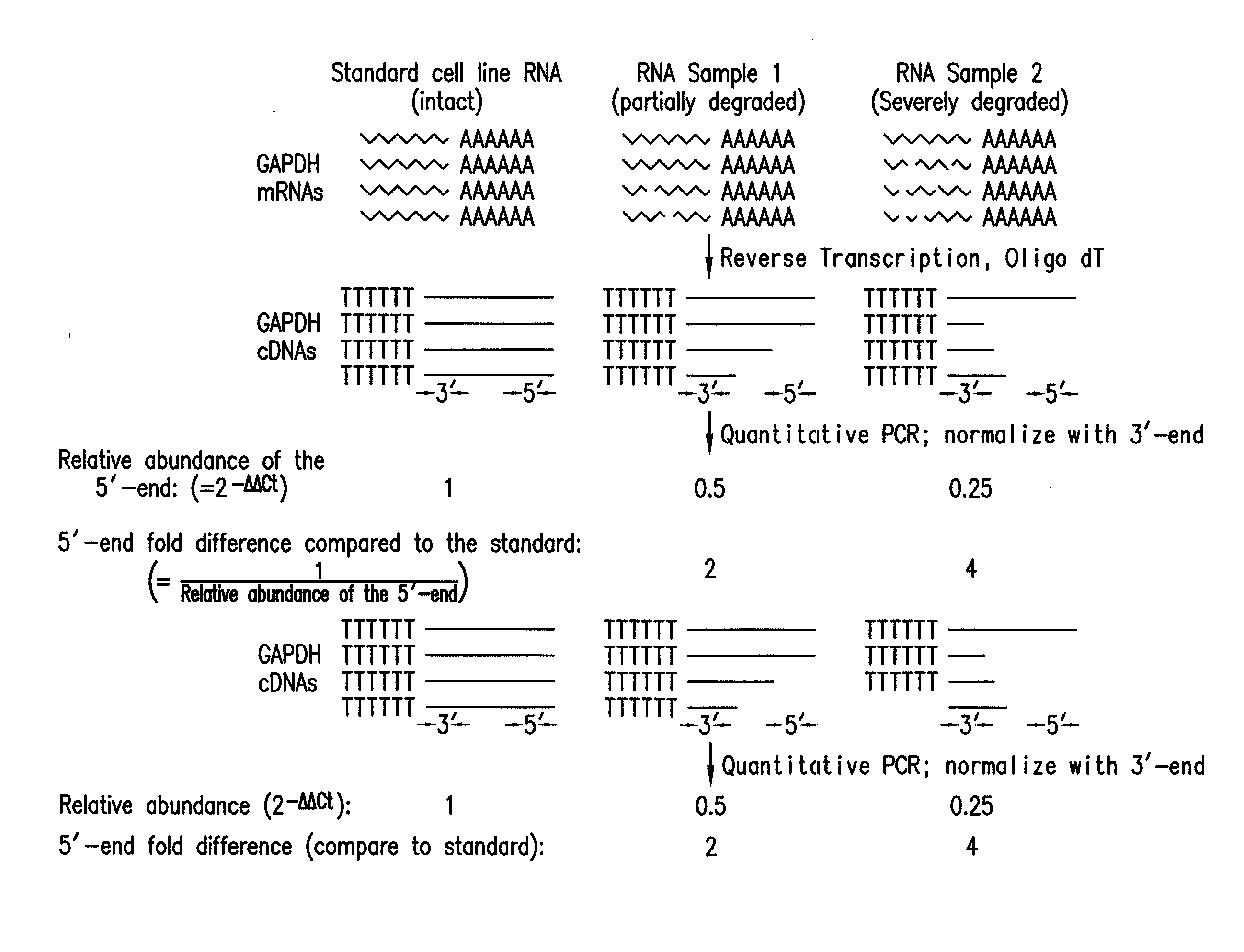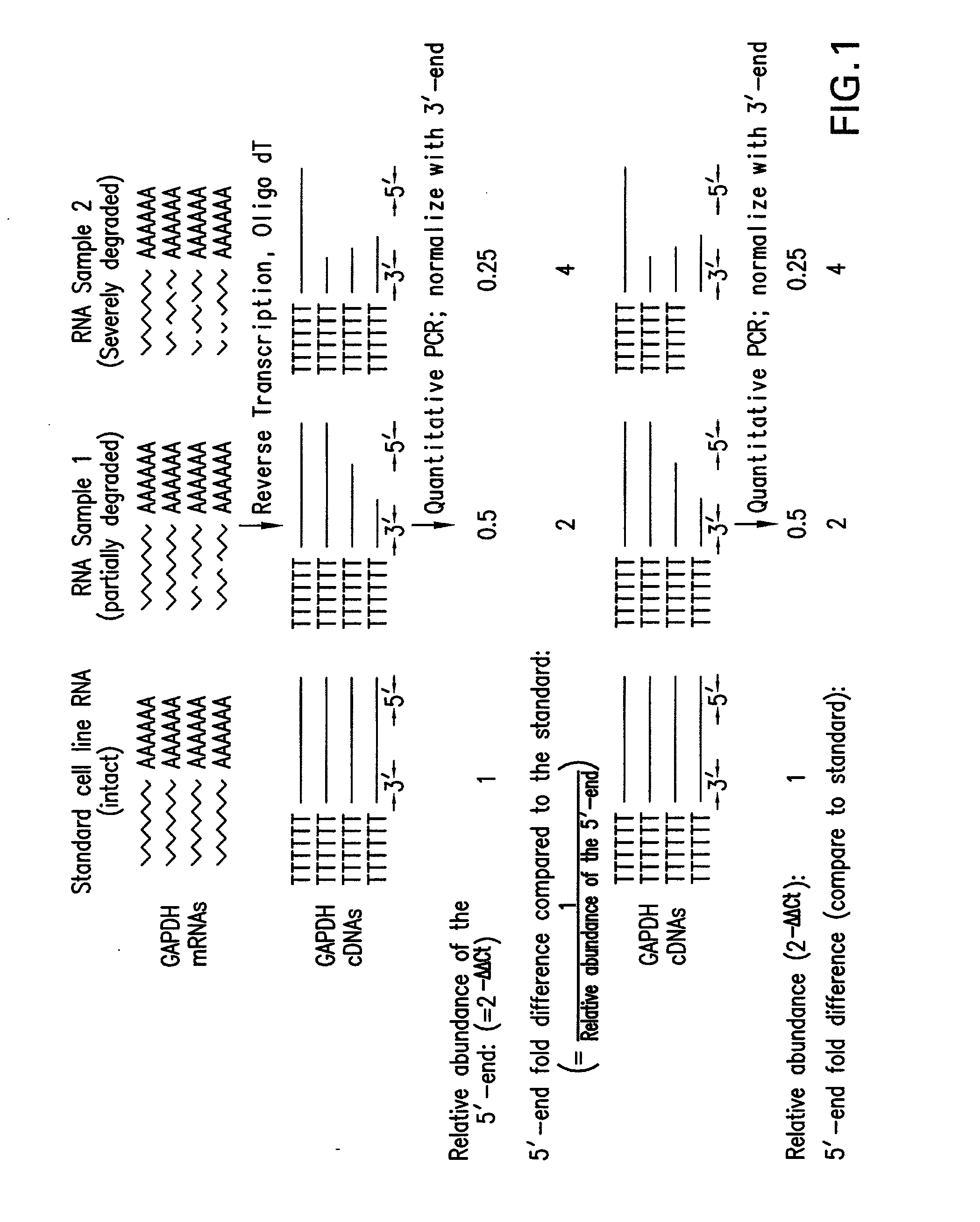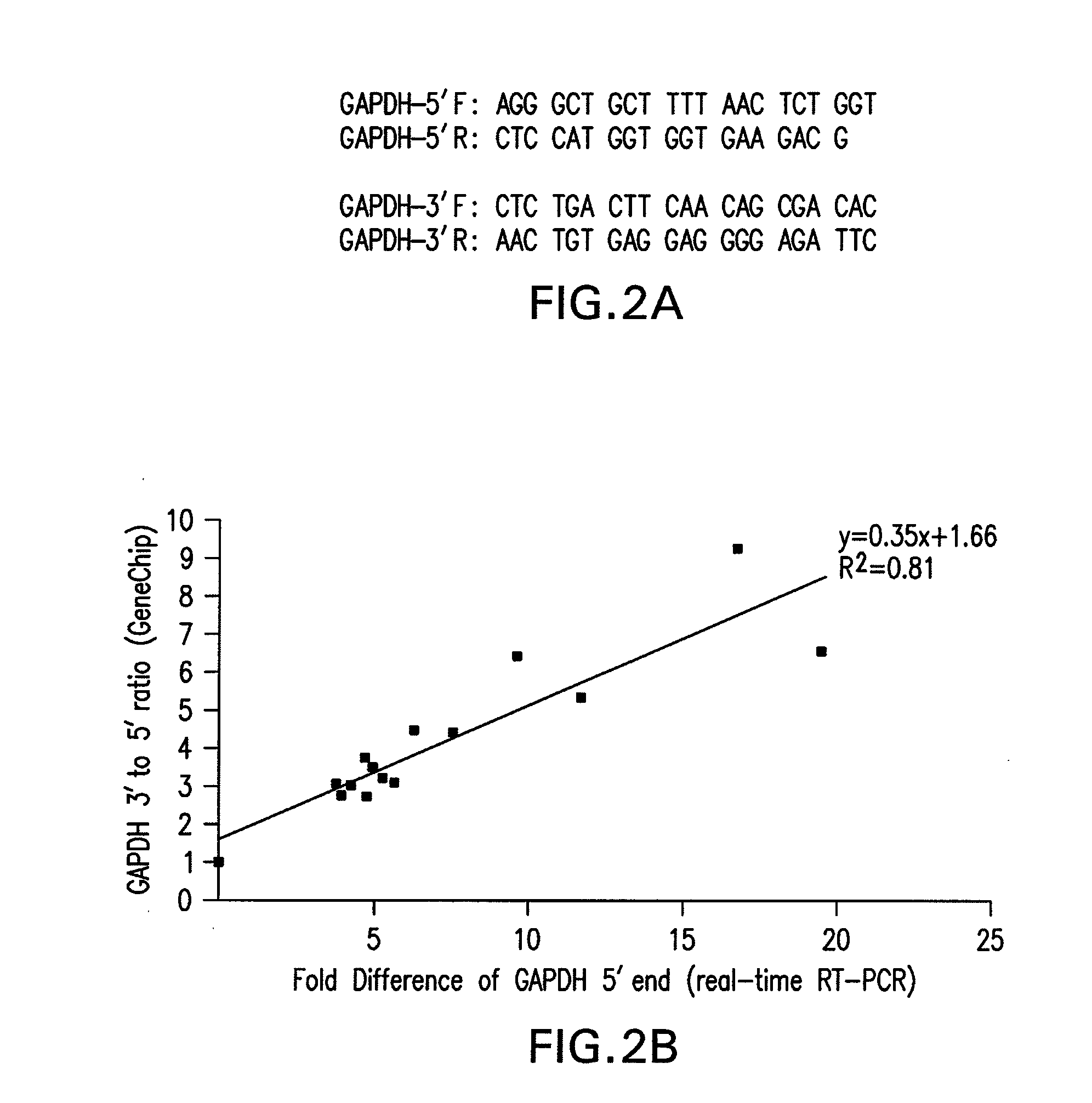Method and kit for evaluating RNA quality
a kit and quality technology, applied in the field of rna quality evaluation, can solve the problems of the likelihood of arriving at erroneous conclusions based on studies derived from non-representative partially degraded samples of test material, and the inability to accurately evaluate the quality of rna samples, etc., to achieve the effect of rapid determination of the quality of the test rna
- Summary
- Abstract
- Description
- Claims
- Application Information
AI Technical Summary
Benefits of technology
Problems solved by technology
Method used
Image
Examples
working example
7. WORKING EXAMPLE
7.1 Materials and Methods
[0055]RNA isolation. cDNA synthesis and Real-time PCR analysis. For each sample, 5 μg of purified total RNA was used to generate cDNAs with the Superscript™ First-Strand Synthesis System (Invitrogen, Carlsbad, Calif.). The final reaction volume was 20 μl. Two sets of PCR primers (FIG. 2A) that flanked the oligomer sequences of the 5′ and 3′ GAPDH probes on the Test3 array (Affymetrix, Santa Clara, Calif.) were designed. PCR generated 262 bp and 276 bp products for the 5′ and 3′ ends of GAPDH respectively. PCRs were performed using the Brilliant SYBR Green fluorescence dye (Invitrogen, Carlsbad, Calif.), the OmniMix™ HS PCR beads (TaKaRa Bio Inc, Otsu, Shiga, Japan), and the Smart Cycler II thermal cycler (Cepheid, Sunnyvale, Calif.). Each 25 μl PCR reaction contained PCR primers (1 pM for each primer), SYBR Green (1×), OmniMix™ PCR reagent (one bead for 2 reactions) and 0.5 μl of cDNA. The following protocol was employed: 1 cycle of 5 min a...
PUM
| Property | Measurement | Unit |
|---|---|---|
| volume | aaaaa | aaaaa |
| temperature | aaaaa | aaaaa |
| temperature | aaaaa | aaaaa |
Abstract
Description
Claims
Application Information
 Login to View More
Login to View More - R&D
- Intellectual Property
- Life Sciences
- Materials
- Tech Scout
- Unparalleled Data Quality
- Higher Quality Content
- 60% Fewer Hallucinations
Browse by: Latest US Patents, China's latest patents, Technical Efficacy Thesaurus, Application Domain, Technology Topic, Popular Technical Reports.
© 2025 PatSnap. All rights reserved.Legal|Privacy policy|Modern Slavery Act Transparency Statement|Sitemap|About US| Contact US: help@patsnap.com



